Camping Guru - all your camping questions answered
Got a camping problem you need to fix?
Our expert, the Camping Guru, Gary Cross, is here to answer all your questions.
Page contents
- About our Camping Guru
- Campsite life questions
- Cleaning a tent questions
- Groundsheet questions
- Buying a tent questions
- Pitching and packing questions
- About Camping magazine
Camping Guru sponsored by:
About the Camping Guru

Got a camping problem you need to fix?
Our expert, the Camping Guru, Gary Cross, is here to answer all your questions.
Gary has a lifetime of camping experience, having started work as a Saturday boy in a camping store at the age of 14.
Since then, Gary's spent most of his working life in the camping industry, both working in retail – including his own shop – and for camping brands.
He has helped design tent ranges and visited factories in China.
But most importantly, Gary has enjoyed countless camping holidays, both at home and abroad. There’s not a lot he hasn’t encountered over the years!
Here you'll find dozens of questions and answers about important – and not so important! – camping issues. You should be able to find everything you need to know about life under canvas.
Our library of questions is being added to all the time so bookmark the page and check regularly if there's something you need explained about camping and tents.
Got any questions?
If you have a camping question you’d like our Camping Guru to answer, contact us at [email protected] or get in touch through social media.
Campsite life questions
Our Camping Guru answers readers' questions about campsite and camping life in general.
What's the best place to pitch my tent on the campsite?
"I’m going camping for the first time. Should I pitch near the toilets for convenience or as far away as possible to avoid noise, lights and potential smells?"
The camping guru says...

I once had this dilemma… we turned up in France and were given a pitch right by the toilet/shower block. The site was fully booked so there was nothing we could do.
Luckily, the site standards were superb and in the end we found it very convenient as our kids were pretty young at the time.
Since then I have always found the Goldilocks rule tends to work best, not too close, not too far away, just in the middle is right for us.
Should I padlock my tent door zips closed?
"I’ve got a lot of expensive gear in my tent that I don’t want stolen. I also feel very vulnerable to intruders at night. Should I padlock the door zips closed?"
The camping guru says...

I understand you may feel this way but for safety reasons I would advise not to lock the tent in any way while you are inside, just in case.
I have been camping for many years and I have never had an issue or heard of someone trying to get into another camper’s tent while they are in the tent.
Getting to know your neighbours is one of the best things you can do, we all look out for each other, I find, when camping.
How do I stay warm in bed?
"How do I stop getting cold in my sleeping bag at night?"
The camping guru says...

There are so many fixes for this. It's easy just to say “get a warmer sleeping bag” which is a start, but let's talk about the next best option. An airbed is the option that most campers start out with to get you off the ground, but they offer next to no insulation. A self-inflating mat (thicker the better) will give you so much more insulation.
A camp bed and self-inflating mat is a combination many experienced campers use… this raises you off the ground as well as giving you the insulation from the SIM. If all else fails, a nice woolly hat and a hot water bottle is a traditional fix.
Is it safe to cook inside a tent?
"My tent doesn’t have a front porch so when it rains it’s impossible to cook outside. Is it safe to cook inside the tent?"
The camping guru says...

Luckily, 99% of “branded” tents sold in the UK over the last 25 years are actually fire retardant; this means you could melt a hole in the tent but it wouldn’t catch fire.
As for cooking inside the tent, well, it’s best not to for many reasons. One, if you are using gas it gives off moisture, as does the food you are cooking, and this can cause condensation. Is it safe to cook in the same area where kids might be hanging out? And then there is the danger of carbon monoxide build-up in unventilated areas.
After saying that, we are all adults here and we all need to take responsibility for our own actions, so if you decide to do it, make sure you take all the appropriate precautions.
Camping as a single parent?
"I’m a single parent and want to camp with my two small children. Will other campers help me until I’m more experienced?"
The camping guru says...

Yes, yes and yes. I have found campers to be the most helpful people I’ve ever met while on holiday.
There’s always one person nearby (usually me!) who loves to pass on their experience and help out. If you use Facebook, there are groups for single campers. SPOT – Single Parents On Tour – is great.
How to make toast on a camping stove?
"How on earth do I make half-decent toast on a camping stove?"
The camping guru says...

There tend to be three methods when cooking on a gas stove. The obvious one is if you have a grill on your cooker, use that. If the stove has no grill then your only option is to use the cooking burners with a fitment. There tend to be two styles of toaster, one cooks four slices of bread in an upright method. I’m not a fan… this method, I find, dries the bread out.
The version I prefer is a piece of kit that lays flat on top of the gas ring. Yes, you can only toast one slice at a time on each ring, but you end up with a perfectly toasted outside and that nice soft inner that us toast fans love.
Which way round should I sleep in my tent?
"We’ve got a tunnel tent… which way should we sleep? Head at the door end or the back wall?"
The camping guru says...

I am going to assume we are talking about a flat pitch first of all. Recently I took a poll on this very subject on my Camping Guru UK Facebook group and the outcome surprised me.
It found that about 70% of campers sleep with their feet closest to the inner tent door and their head at the back wall. The reason this surprised me is that most inner tents have a sloping wall towards the back of the tent and a vertical wall for the inner tent door area.
So, controversially it seems, I'm going to go for the head at the inner tent door end and feet at the back of the tent.
Cleaning tents questions
Our camping guru answers readers' questions about cleaning tents, weathering new tents and keeping everything free from smells and daily camping grime.
Do polyester tents need to be weathered before using?
"We’ve just bought a new polyester family tent. Do we need to treat it or weather it before our first trip to make it waterproof?"
The camping guru says...

New polyester tents are ready to go, there's no need to weather them. That's something you may want to do to a new polycotton tent (and we will cover this elsewhere).
However, polyester tents will be affected by the sun's UV rays which can break down the fabric in a surprisingly fast period of time, especially tents that have a low denier (thickness of fabric).
So to prolong the life of your tent you could treat it to a coating of Nikwax Tent & Gear Solarproof, which I know from experience will extend the life of the fabric by up to twice as long.
How do I weather my polycotton tent before using it?
"I know I should weather my polycotton tent before using it, but how do I do it?"
The camping guru says...

There are two ways, one is to set your tent up – it must be fully pegged out as if you were camping – then put the rain setting on your garden hose and give the tent a good soaking.
But the best method is using Mother Nature – again, pitch your tent and let her do her thing.
Most modern polycotton tents can be weathered while away camping. You may get a fine mist coming through the fabric the first time it rains but this will only be for a short time while the fibres swell and seal themselves.
(Photo courtesy of Iain Duff)
Can bubble mixture damage your tent?
"My five-year-old son was told off by another camper for blowing bubbles on the campsite – they said that the mixture could stop the tent fabric being waterproof. Is this true or was he just a grumpy old killjoy?"
The camping guru says...

Yes and no, he may well be a grumpy old killjoy… the older I get the more I can see myself falling into that category!
He did have a point, though; the solution (detergent) in the bubbles can settle on the tent and affect the surface tension, allowing the outer layer of the fabric to "wet out".
If the internal factory-applied waterproofing is still working, I doubt the tent would actually leak but it's still not something I would want landing on my tent. All this can be made even worse if you have a polycotton tent as they rely mostly on the natural way fibres swell when wet to keep the water out, and soaps can definitely affect natural fibres.

(Photo courtesy of Pixabay)
How to get rid of a musty smell from your tent?
"My polycotton tent’s been stored in the garage for a couple of years and when I opened it out there was a musty smell. There’s no sign of mould, so what could be the cause? And how can I get rid of the smell?"
The camping guru says...

Wow, it sounds like you have got lucky. Hopefully, you’ve caught the tent just before the dreaded mildew has taken hold as the garage must have been damp at some point.
Pitch the tent as soon as possible, let it air out fully, allow it to totally dry and the smell should quickly disperse.
How to clean off bird poo?
"What’s the best way to clean bird poo off the flysheet of my tent?"
The camping guru says...

If you notice the bird poo straight away (fresh) then lots of clean water will wash it away.
If the poo has dried then a stiff brush or even a credit card will scrape it away – then soak the area with clean water to remove the last residue.
The most important thing is to not use any soap/chemicals as these can affect the durable water repellency.
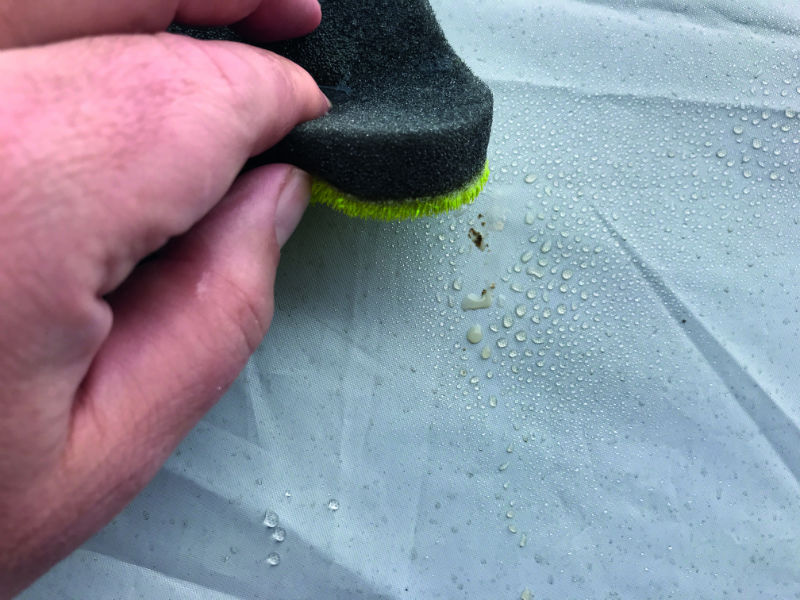
(Photo courtesy of Iain Duff)
Groundsheet questions
Our camping guru answers readers' questions about groundsheets, carpets and damp-proofing issues.
Why is there a patch on my new groundsheet?
"Previously you have explained what the hole you find in the groundsheet on some tents is – well, I have another similar question. Why is there a patch on my groundsheet? It looks like a repair but my tent is brand-new so I’m definitely hoping it’s not that! Can you explain?"
The camping guru says...

This is normally on the underside of the sewn-in groundsheet; you will find directly on the inside of the tent a clip or section that needs to be reinforced at this point.
This is part of the manufacturing process, it’s not always the prettiest finish but it is required.
What is denier and hydrostatic head?
"In a tent fabric, what do they mean by the denier and the hydrostatic head? And what is more important for keeping the tent dry?"
The camping guru says...

It's easy to get confused with all the numbers that are advertised to make one tent sound better than another, so let's try and make this simple. Denier is a way of describing the thickness of a fabric, Hydrostatic head (HH) is a measurement of water resistance. The higher the better generally for family-sized tents.
Which is more important for keeping a tent dry? I'd have to say HH but as with most things there are other issues to consider, such as the design and quality of the manufacturing.
Is dampness on the tent floor in the morning evidence of a leak?
"I’ve found dampness on the inside of the flysheet in the morning and a few puddles of water around the tent. Do I have a leak and, if so, how do I find it?"
The camping guru says...

Most probably not. This sounds like the dreaded condensation, which you will suffer from at some point, especially if your tent is polyester.
There is a myth (I used to promote this) that an adult gives off about a litre of moisture a night but, in fact, after researching, I discovered it’s only about a fifth of that.
Condensation is mostly caused by weather conditions – but lots of campers in a tent and wet towels, etc, will add to the dampness.
Keep all your vents open when camping as this may help reduce the amount of condensation. I always say the only time they should be shut is when packing away.
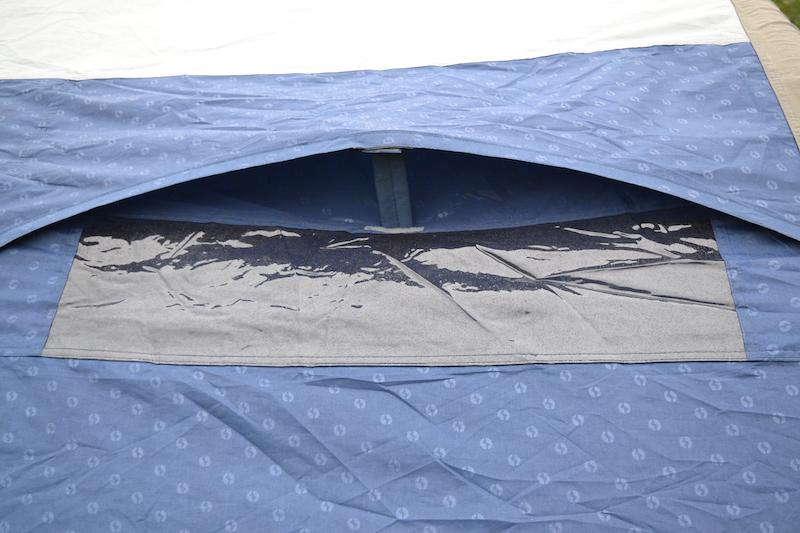
(Photo courtesy of Gary Cross)
What to do with a damaged groundsheet?
"The sewn-in groundsheet in my tent has a tear in it. Will I have to bin the whole tent?"
The camping guru says...

Absolutely not. Depending on the size of the hole and how nice you want the repair to look, there are a few fixes.
If the hole is not much bigger than a 50p piece then a patch of Tear-Aid inside and out will give a semi-permanent fix.
You will hardly see the fix, especially if the hole is more of a split. Tear-Aid tape should be in every camper’s kit. If the hole is the size of a cooking pot then a roll of duck/gaffa tape inside and out will do the job. Again, I never camp without a roll of this type of tape.
Is there a cheap alternative to camping carpets?
"What’s the best cheap alternative to a tent carpet?"
The camping guru says...

I'm not so sure there is and I say that because of safety reasons – most family tents are now made from fire-resistant materials and that includes the fitted carpets that brands make available for their tent ranges.
You could look for a discontinued tent that has a similar size living area as your tent, then search out the carpet for that tent as it may be reduced to clear.
Explain the hole in my tent's groundsheet
"The groundsheet of my new Outwell tent has a hole added in front of the bedroom section. It’s got a piece of material with a drawstring that covers the hole but I’ve absolutely no idea what it’s there for. Any ideas?"
The camping guru says...

You will find this hole in the groundsheet near the centre. It will line up with a pegging point at the front of the inner tent, and this is where you peg the inner to the ground.
I personally never bother pegging the inner tent down here, though, as I like the base of the inner tent to have some give in case I’ve had a glass or two of red wine… the fewer trip hazards the better as it doesn’t take much for me to get a bit wobbly!
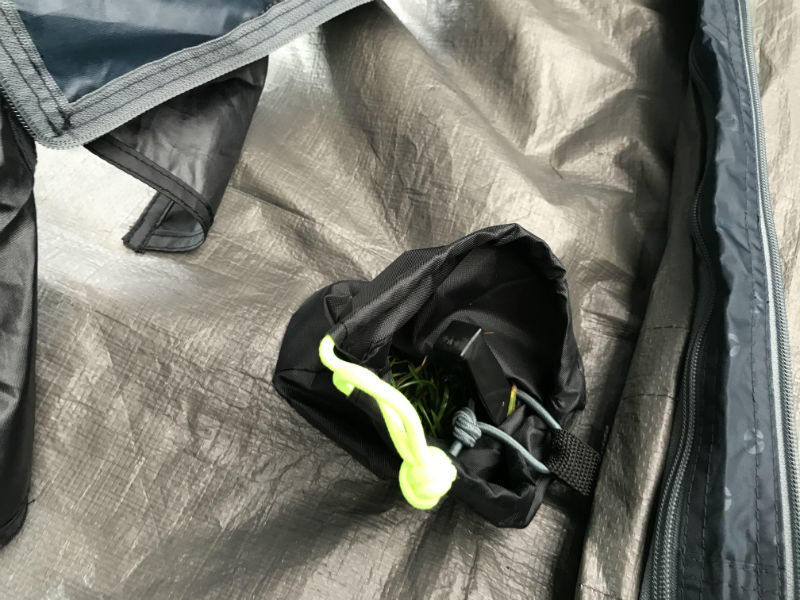
(Photo courtesy of Gary Cross)
Should I fit a footprint or groundsheet?
"Do I have to buy a footprint and carpet for my tent?"
The camping guru says...

No, you don’t have to buy either, but I would highly recommend the first and strongly suggest the other.
A footprint will keep the underside of your tent nice and clean and it will give you a clean surface to pitch and pack your tent away on, so, yes, highly recommended.
Tent carpets? Well, I wouldn’t camp without one these days – pure luxury but not a necessity.
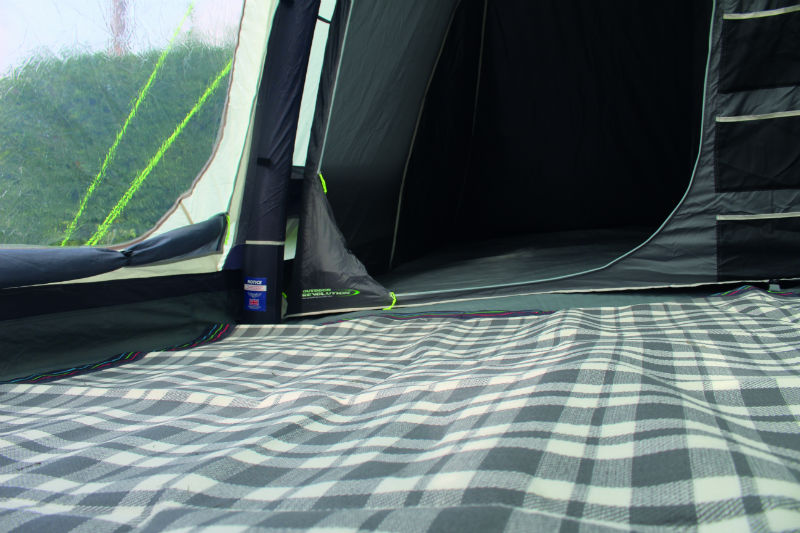
(Photo courtesy of Gary Cross)
Buying tents questions
Our camping guru answers readers' questions about buying tents and camping equipment, where to buy and what to buy.
Buying a used tent?
"I am looking to get back into camping after a long break, would you recommend buying a new or used tent?"
The camping guru says...

Buying a used tent is like buying a used car – you want to take it for a test drive first.
That’s not so easy with a tent, but you must at least see it pitched. You need to know what you are looking at with a tent. If it’s polyester, does the fabric feel like a crisp packet? Has it faded a lot? Is there a musty smell? These are all warning signs for you to run a mile.
So if you are an experienced camper and know what you are looking at then, yes, a used tent may get you a much higher spec than you thought you could afford… but it may also open a can of worms, often with no comeback.
As for buying new, the main benefit is the warranty. You should also get some great advice from the retailer, and this alone can save you hundreds of pounds by getting you the right tent for you and your family.
Should I go for a polycotton or polyester tent?
"What would you recommend – polycotton or polyester tent?"
The camping guru says...

Polycotton… BUT. There are always advantages and disadvantages for both fabrics. I jumped in with polycotton because the fabric lasts longer and is breathable and therefore more comfortable to camp in.
The disadvantages are the cost to buy, weight and pack size. If you can overcome those three downsides to polycotton then it’s the way to go.
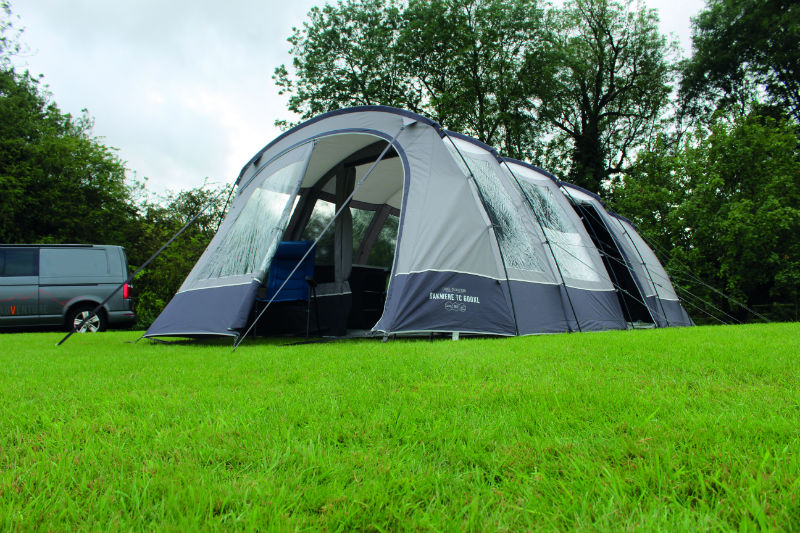
(Photo courtesy of Gary Cross)
What's better: online or in a shop?
"Should I buy my new tent online or in a physical store?"
The camping guru says...

That is not such an easy question to answer these days. Pre-Covid I would have said to visit a quality camping retailer with a large tent display.
That’s still my first suggestion, but it may not be possible at the moment.
Walking around a display of tents is by far the best way to choose the right tent for your family.
You should be asked many questions by the staff so they can fine-tune which tents will work for you; this will often save you time and money. It’s hard to visualise the actual size of a tent online and it’s also nice to see the tent packed up in the shop.
The best tent pegs
"Is there one type of peg you would recommend for using with my large inflatable tent?"
The camping guru says...

No, I’m afraid there isn’t one single peg I would suggest. I would recommend as many different types of peg as you can find.
If I had to choose two different types of pegs for your tent I would use 9in rock pegs for hard-baked or very stony ground.
If the ground is soft-to-medium firmness, then tough, wide 9in to 12in plastic pegs would be ideal… not ones you can bend easily by hand, though.
Poles v inflatable tents?
"Which is better all round – poles or inflatable? And then can you recommend the best family-sized tent on a tight budget?"
The camping guru says...

When it comes to family-sized tents I’m convinced inflatable is the way to go. Saying that, if all you want is a cheap/budget tent, then poles are your only option, as the words “cheap”, “budget” and “inflatable” don’t sit well together.
You will be looking at around £1,000+ for a good family-sized inflatable tent; a similar-sized pole tent will cost half that, especially with fibreglass poles, and with practice it will pitch relatively easily.
A steel-framed tent will cost a similar amount to a good inflatable tent and most people would prefer the ease of an inflatable tent over a poled tent.
Pitching and packing questions
Our camping guru answers readers' questions about pitching and packing tents.
What's the best way to fold my tent to get it back into the bag?
"Is there a foolproof way to fold your tent away so it goes in the bag?"
The camping guru says...

The way you roll your tent up will depend on the type and design of your tent but there are a few things you need to do.
If the tent has a fully sewn-in groundsheet (most modern family tents), leave all the doors open, as it’s all about getting the trapped air out of the tent.
Try to roll towards an open door. If you have an inflatable tent, open all the doors again but fold it in a way so you roll towards the open valves.
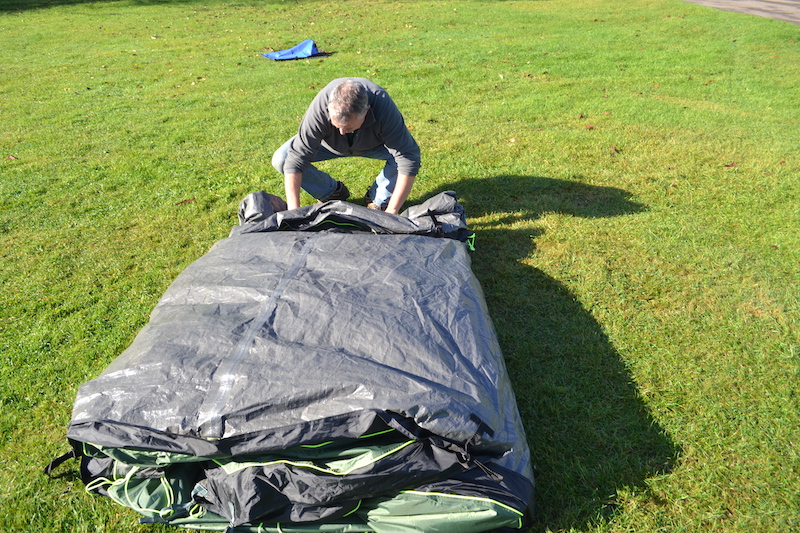
(Photo courtesy of Gary Cross)
Should I always peg out the guylines?
"Should I always peg out all the tent guylines when pitching, even if the weather’s calm?"
The camping guru says...

Yes, always, especially on family tents. Some tents need the webbing straps and guylines to help form the structure of the tent.
I suppose the main reason, though, is because we generally camp in the UK and we all know we can have four seasons in one day on this beautiful island of ours.
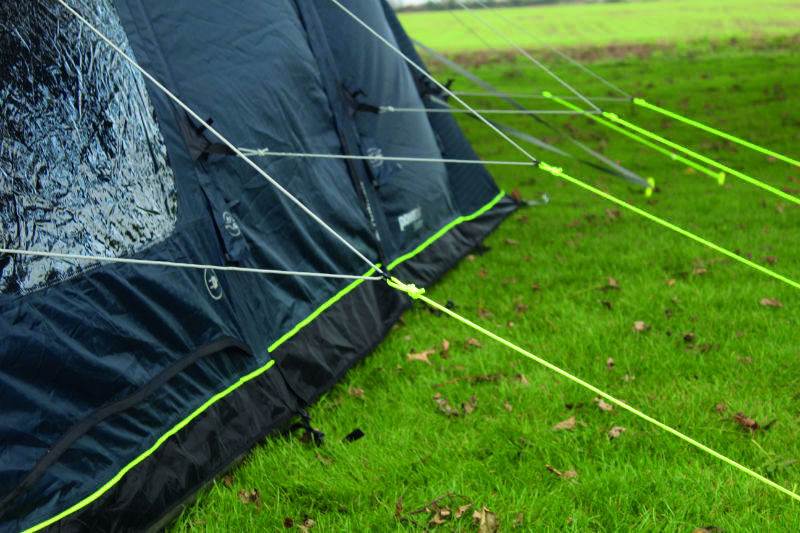
(Photo courtesy of Iain Duff)
What to do with tent mudflaps?
"Should the mudflaps around the bottom of my tent be in or out? I always thought they were meant to be out, but a fellow camper suggested they should be tucked in. What does the guru think?"
The camping guru says...

This all depends on the tent. Many years ago it was nearly always out, to aid water run-off, then frame tents started having the flaps inside so you could lay a heavy PVC groundsheet on top of the flaps to make a seal.
These days mud flaps are not really needed… the reason for this is the majority of family tents have a sewn-in groundsheet in the main living and sleeping area. Where they are still used is in the front enclosed porch areas of modern tents.
Some brands have designed their tents so the flaps peg down on the outside and some so they lay in the inside similar to the old frame tents.
I personally would do away with them fully in these front porch areas of modern tents as I like to have good ventilation around the base of these porch areas where I would keep my fridge or cooking equipment.
What pressure do you inflate a tent to?
"What pressure should I inflate my tent to, and does the temperature make any difference?"
The camping guru says...

Firstly, inflate the tent to the recommended pressure the brand suggests. Temperatures can affect the pressure in the beams, but you need a huge swing in temperature and most beams are tested to a far higher pressure than the suggested range.
If you pitch up and its 30°C then inflate the tent to the recommended pressure but, if in a day or two, the temperature drops to, say, 15°C, you will see the beams start to soften so a little adjustment may be required.
The same may happen the other way, so if the temperature increases greatly since you pitched up, the beams may feel a bit too hard, so letting a little air out would be a good idea.
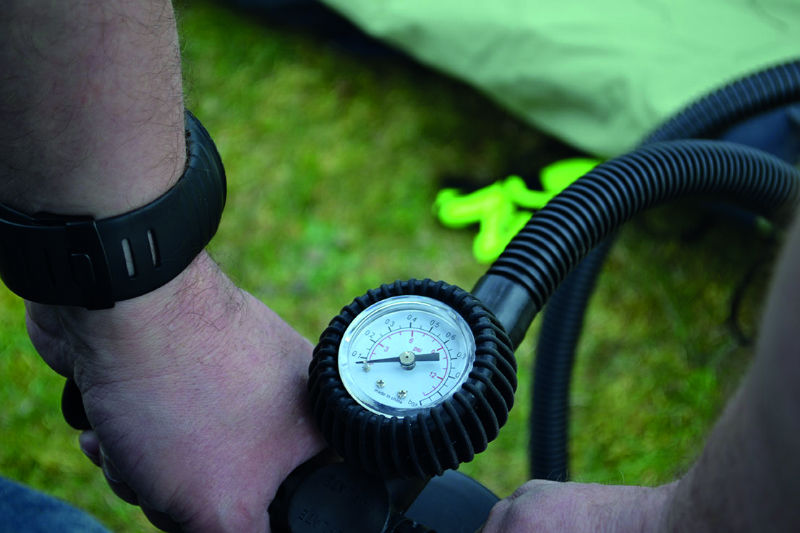
(Photo courtesy of Gary Cross)
Finished reading?
Want more great tent information? Our "Camping skills guide" is full of great information and camping advice.
Expert Camping advice to your door!

Camping magazine has been the voice of campers for over 60 years!
Camping is the UK's only magazine devoted to the wonderful world of life under canvas and the freedom it brings. Every issue is packed with inspirational travel, the top camping sites to stay on, reviews of the latest tents, camping gear reviews, practical help and much more to help you get the most out of your camping adventures.
Want to know more about Camping magazine?
About Camping magazine






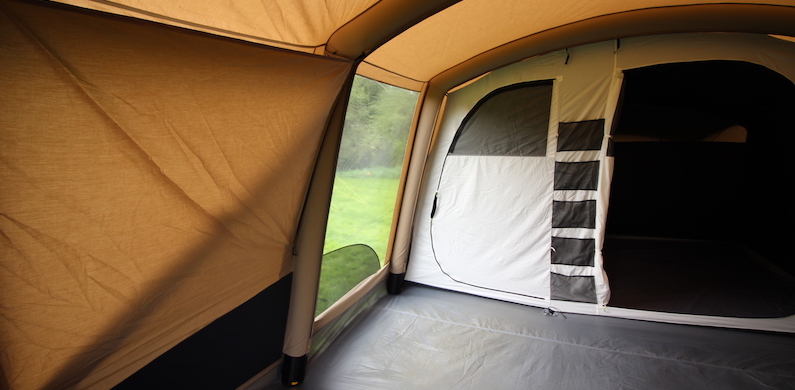


Recent Updates
Our family camping checklist: everything you need to pack
Sure, you’ve packed the tent and the sleeping bags – but what about slip-on shoes and glow sticks? These are the family camping essentials that you ...
Our guide to planning the perfect camping road trip
Roll down the window, pop on those shades and crank up the volume – it’s time for a road trip. Get ready for ...
Camping in Europe: our 12 top tips
If you’ve not camped in Europe before, there’s a few tips and tricks you’ll need to avoid some continental ...
Solar power for camping: all you need to know
Staying connected in the great outdoors is easier than ever with a solar charger – or is it? How reliable are ...
Wild camping kit list: everything you need for your next adventure
Make sure you’re ready for anything with this list of lightweight camping gear and clothing, including ...
Camping furniture: all you need to know to make your tent a cosy haven
We delve into the essentials of camping chairs, camping tables, and kitchen and bedroom furniture, ensuring ...
Camping lights for tents: What you need to know
We will guide you through all the lighting options available for you and your tent, including interior ...
Camping kitchen: all you need to know
In the great outdoors, a well-equipped camping kitchen transforms mealtime into a delightful adventure ...
How to pack away your camping gear for winter
A complete guide to packing and storing your gear at the end of the season ...
Camping guide to trailers
Trailer stash or trailer trash? Being able to carry lots of other gear when you go camping isn’t such a bad ...
Other Articles
Winter camping: all you need to know to keep warm
Winter doesn’t have to mean the end of the camping season. With good preparation and the right gear, there’s no reason why you can’t camp all year ...
Camping toilets: a complete guide
If you are wild camping, camping off-grid or the campsite you book onto doesn’t have toilet facilities, you ...
Top tips for camping in windy weather
How to make sure your tent stands up to gusty conditions ...
Camping tents: a complete guide
If you're considering buying a camping tent, whether it's your first time or you're a seasoned camper, making ...
Camping sleeping bags and beds: a complete guide
When it comes to camping, there's one essential item that can make or break your outdoor adventure: the ...
Camping gas: how to use gas on the campsite
A complete guide to using camping gas appliances safely on the campsite, from choosing the right stove to ...
Camping storage: a complete guide
Having problems knowing where to put all your gear when you're camping? Read our top tips and see some great ...
Camping electric hook-up: a complete guide
This is everything you need to know about using electricity on a campsite, including how to hook up ...
How to pack all your camping gear into your car
Planning a family camping holiday? Find out the best way to fit all the kit you need into your car boot, roof ...
Camping stoves and cookers: the complete guide
Camping stoves are an essential part of any outdoor adventure, allowing you to prepare meals and hot drinks ...